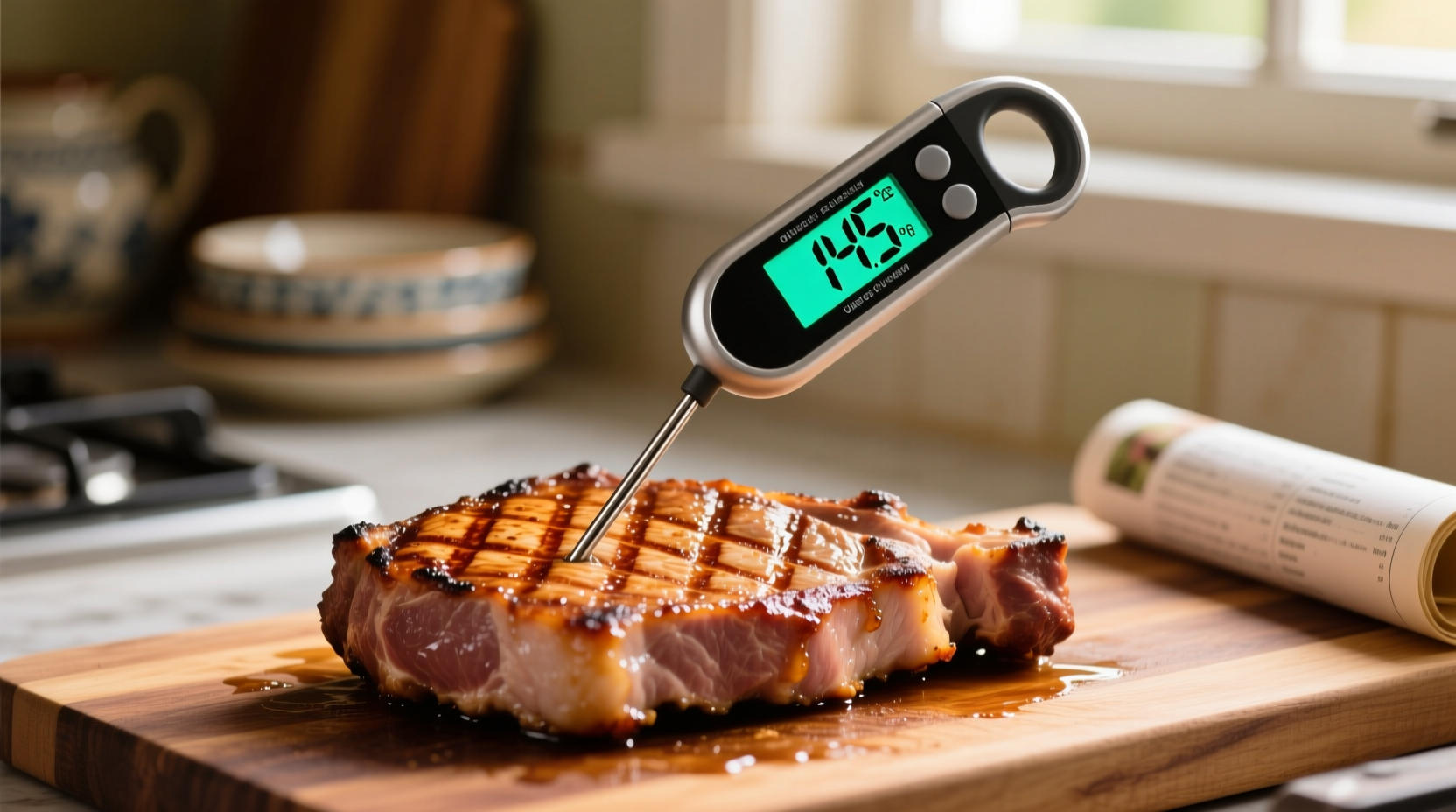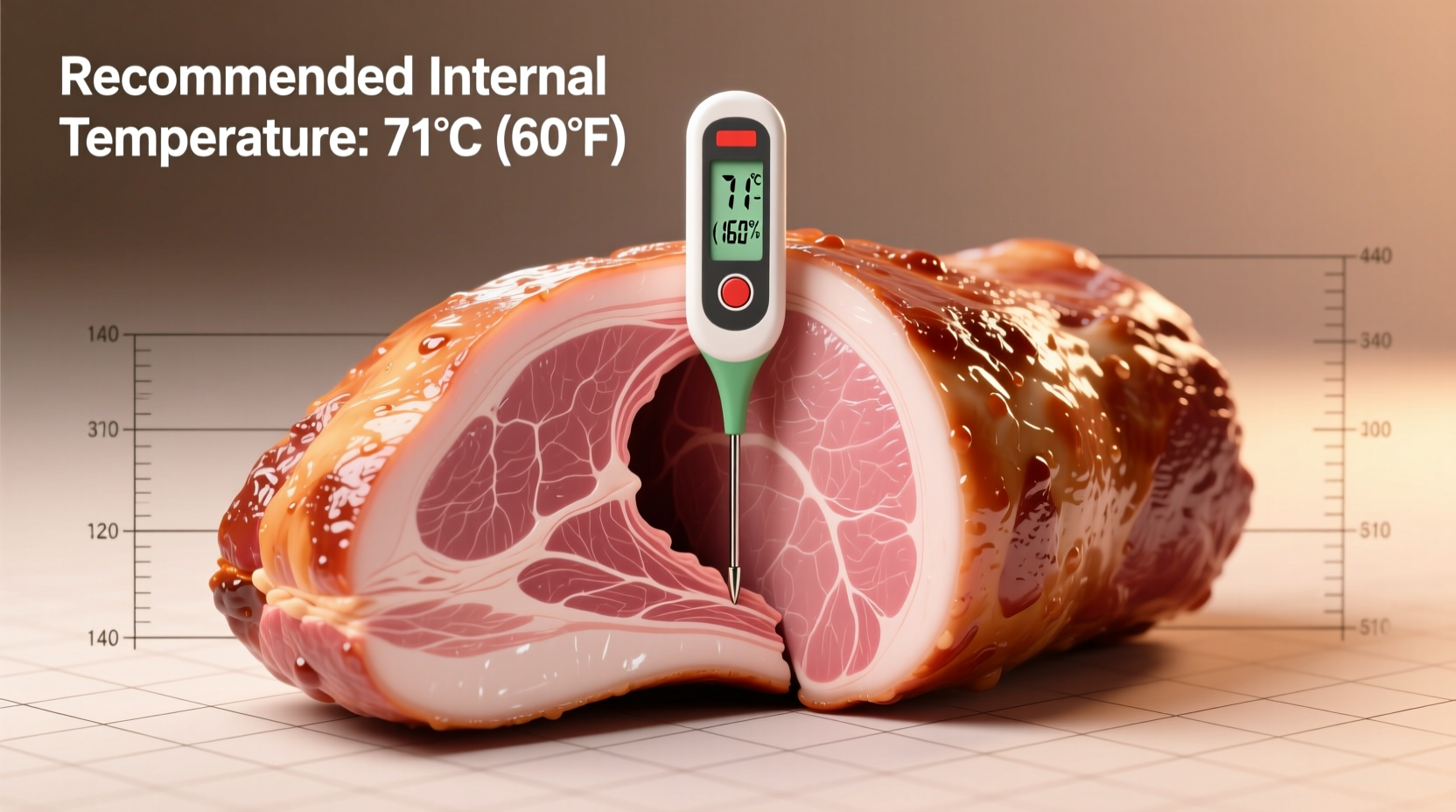For decades, home cooks were told to cook pork until it was well done with no trace of pink. Today, thanks to improved farming practices and food safety science, you can safely enjoy pork that's properly cooked to 145°F with a beautiful pink center. This precise temperature destroys harmful pathogens while preserving moisture and flavor.
The Evolution of Pork Cooking Temperatures
Understanding why pork cooking recommendations changed helps build confidence in current guidelines. This isn't just culinary trendiness—it's science-backed food safety evolution.
| Time Period | Recommended Temperature | Primary Concern | Scientific Basis |
|---|---|---|---|
| Pre-1980s | 170°F+ | Trichinella spiralis | Limited parasite control methods |
| 1980s-2011 | 160°F | General pathogen safety | Improved farming reduced trichinosis risk |
| 2011-Present | 145°F + 3-min rest | Precision pathogen elimination | USDA research confirmed safety at lower temps |
The USDA officially updated its recommendation in 2011 after extensive research showed that 145°F with a 3-minute rest effectively destroys Salmonella, E. coli, and Trichinella parasites that might be present. This change was published in the USDA Food Safety and Inspection Service guidelines and has been consistently reinforced since.
Why 145°F Is Scientifically Safe
The magic happens through a combination of temperature and time. When pork reaches 145°F and maintains that temperature during the mandatory 3-minute rest period, it creates conditions where harmful bacteria cannot survive. During this rest time, the internal temperature remains constant or continues to rise slightly, ensuring complete pathogen destruction.
"The 3-minute rest period is not optional—it's a critical component of the cooking process," explains Dr. Mindy Brashears, former USDA Undersecretary for Food Safety. "This allows heat to distribute evenly and complete the pathogen kill step that begins at 145°F."

How to Measure Pork Temperature Correctly
Getting an accurate reading requires proper technique:
- Use a reliable digital thermometer - Dial thermometers lack the precision needed
- Insert into the thickest part - Avoiding bone, fat, or gristle
- Wait for stabilization - Digital probes need 10-15 seconds to give accurate readings
- Check multiple spots - Especially with irregularly shaped cuts
- Don't rely on color - Pinkness doesn't indicate undercooking in pork
For ground pork products like sausage, the recommendation differs—cook to 160°F as the grinding process distributes potential pathogens throughout the meat. This distinction between whole-muscle and ground products is critical for food safety.
Pork Cuts and Special Considerations
While 145°F applies to most fresh pork cuts, certain preparations require different approaches:
- Pork shoulder (for pulled pork): Requires cooking to 195-205°F to break down connective tissue
- Pre-brined or cured products (like ham): Follow package instructions as they're often pre-cooked
- Thin cuts (like cutlets): May require slightly higher temperatures due to rapid heat loss
- Smoked pork: Must reach 145°F minimum but often cooked higher for texture
When cooking multiple cuts simultaneously, always measure each type separately. A pork loin might reach 145°F while a thicker pork butt shoulder needs significantly more time to become tender.
Common Temperature Mistakes to Avoid
Even experienced cooks make these temperature-related errors:
- Testing too early - Opening the oven or grill frequently drops temperature
- Not accounting for carryover cooking - Remove pork 5°F below target
- Ignoring rest time - Cutting too soon releases precious juices
- Using visual cues - Modern pork can remain pink even when properly cooked
- Thermometer placement errors - Measuring near bone gives false high readings
Professional chefs consistently emphasize that investing in a quality instant-read thermometer pays dividends in perfectly cooked pork every time. The Thermapen ONE and ThermoPro models consistently rank highest in independent testing by the American Meat Science Association.
Food Safety Beyond Temperature
Temperature is just one component of safe pork preparation:
- Cross-contamination prevention - Use separate cutting boards for raw pork
- Proper refrigeration - Store below 40°F and use within 3-5 days
- Thawing methods - Never thaw at room temperature; use refrigerator, cold water, or microwave
- Cleanliness - Wash hands and surfaces after handling raw pork
Remember that proper cooking temperature cannot compensate for poor handling practices earlier in the food chain. Always purchase pork from reputable sources that maintain proper cold chain protocols.











 浙公网安备
33010002000092号
浙公网安备
33010002000092号 浙B2-20120091-4
浙B2-20120091-4